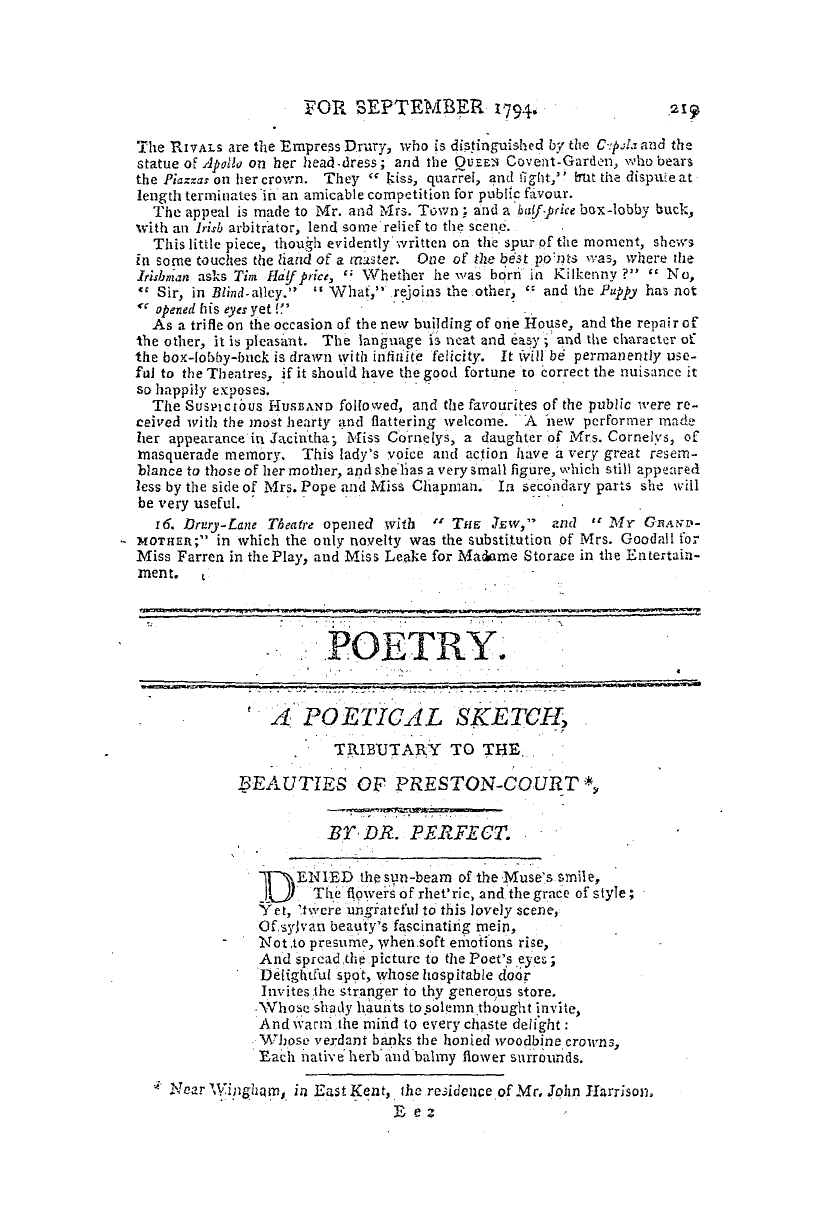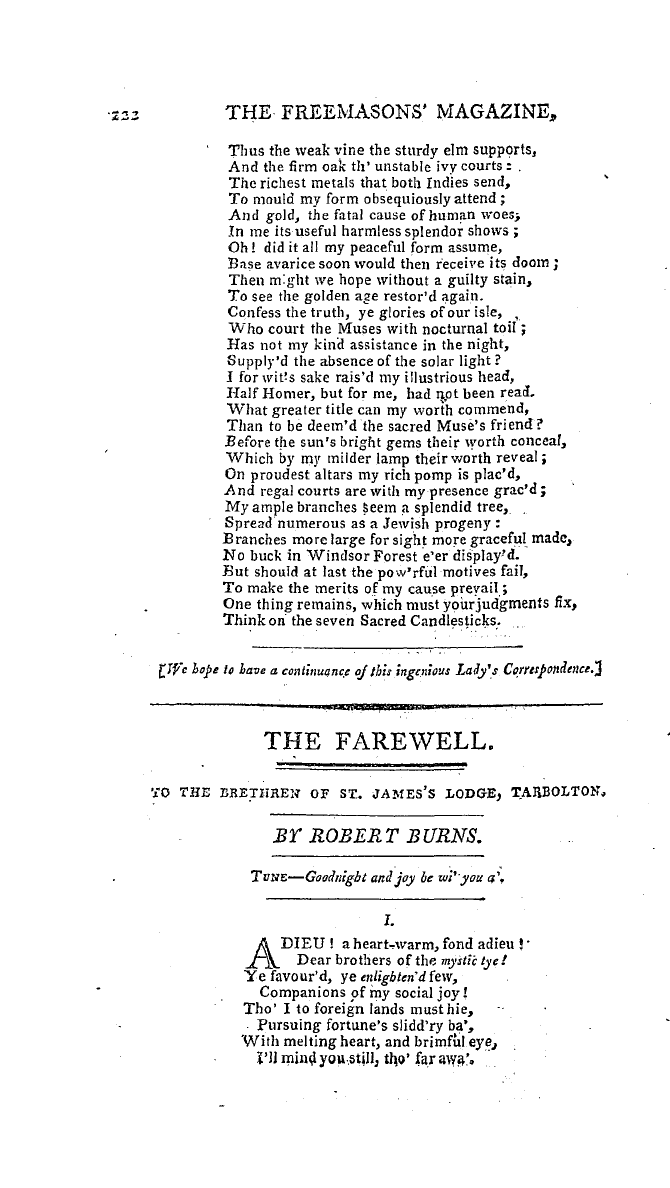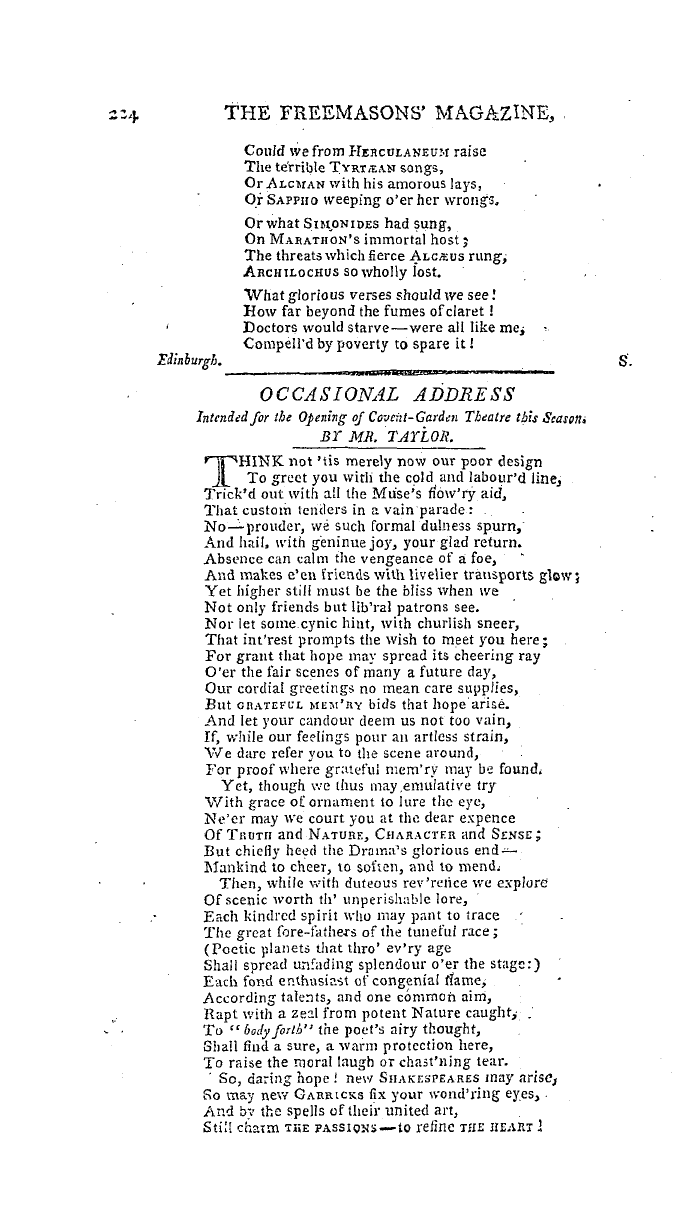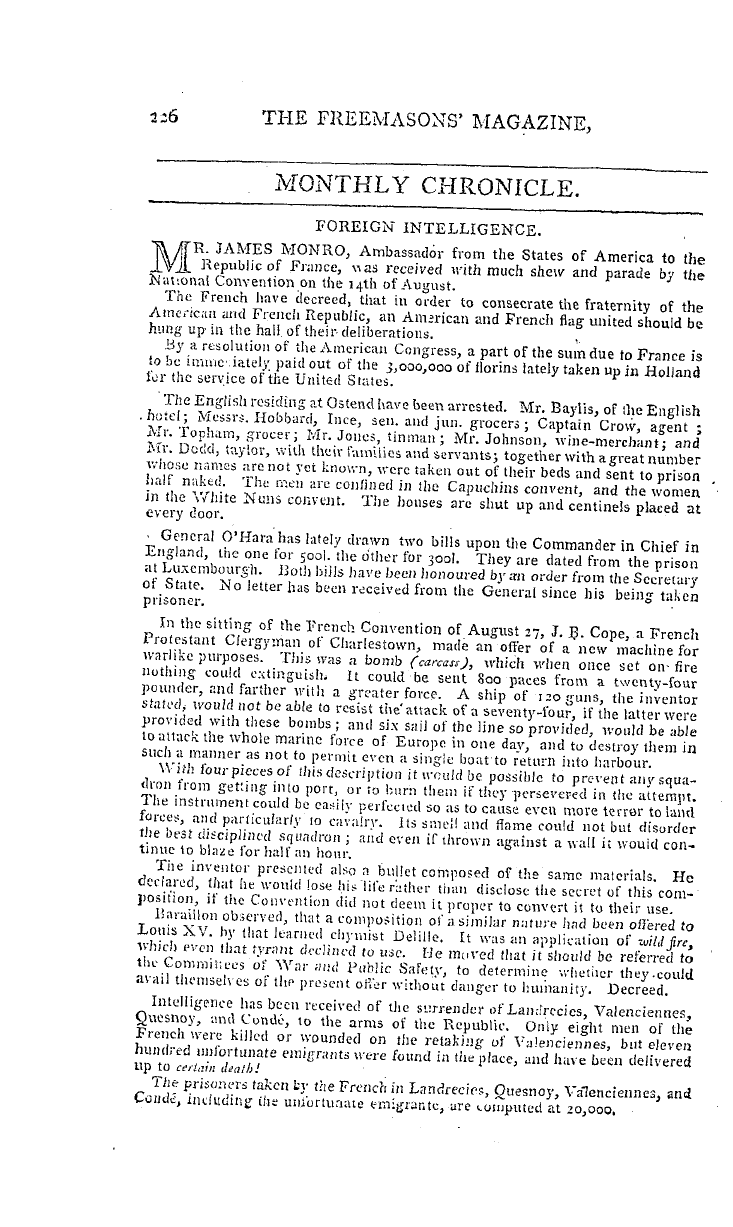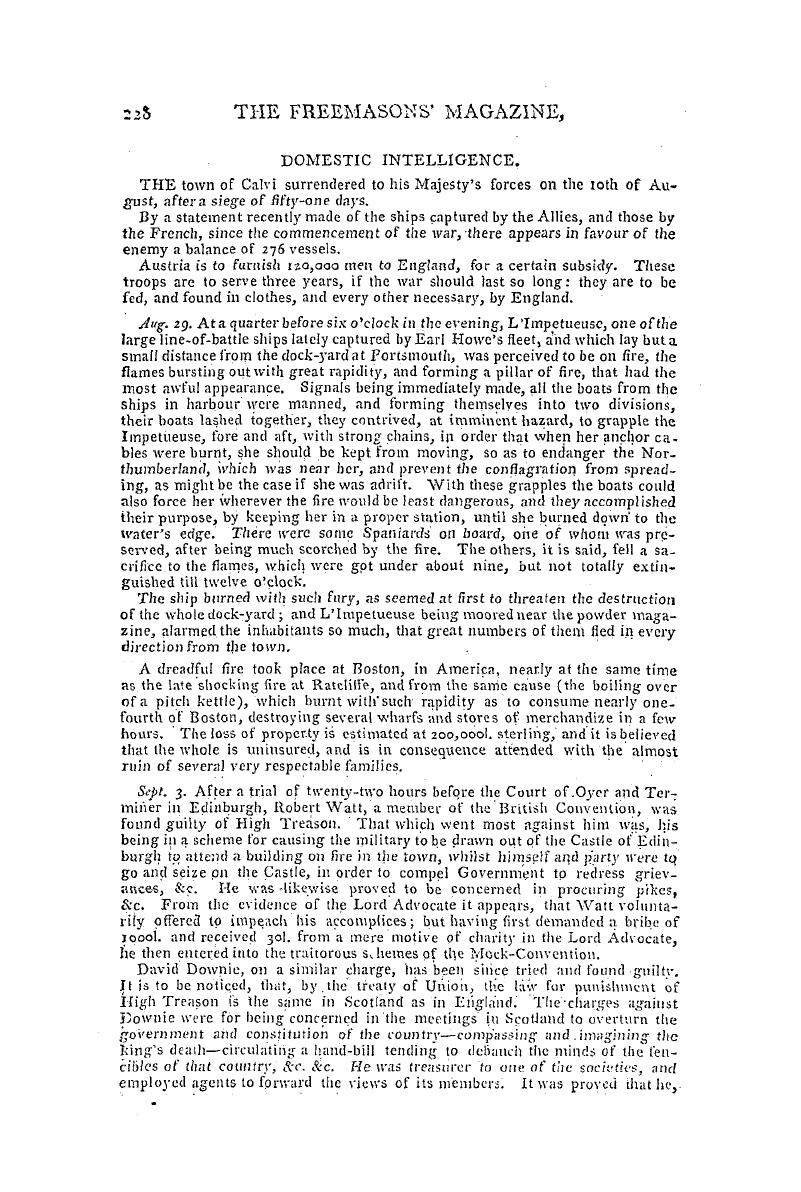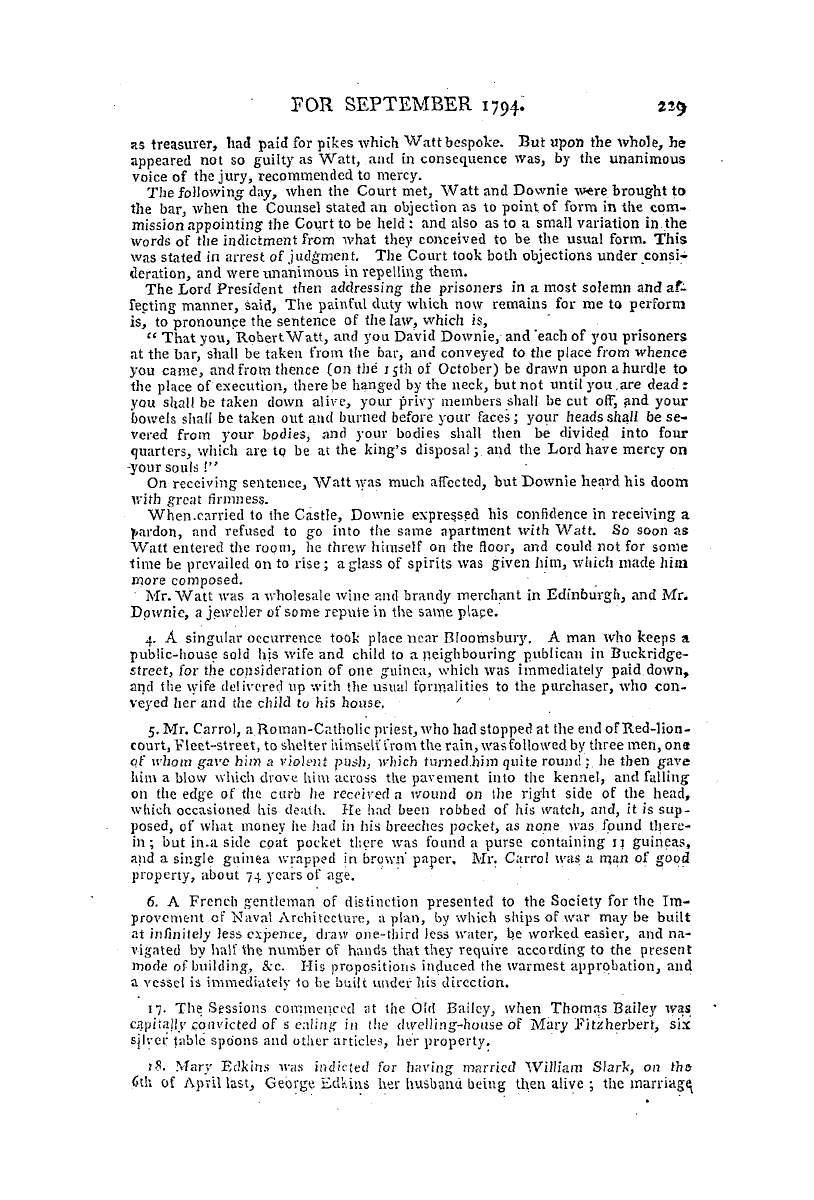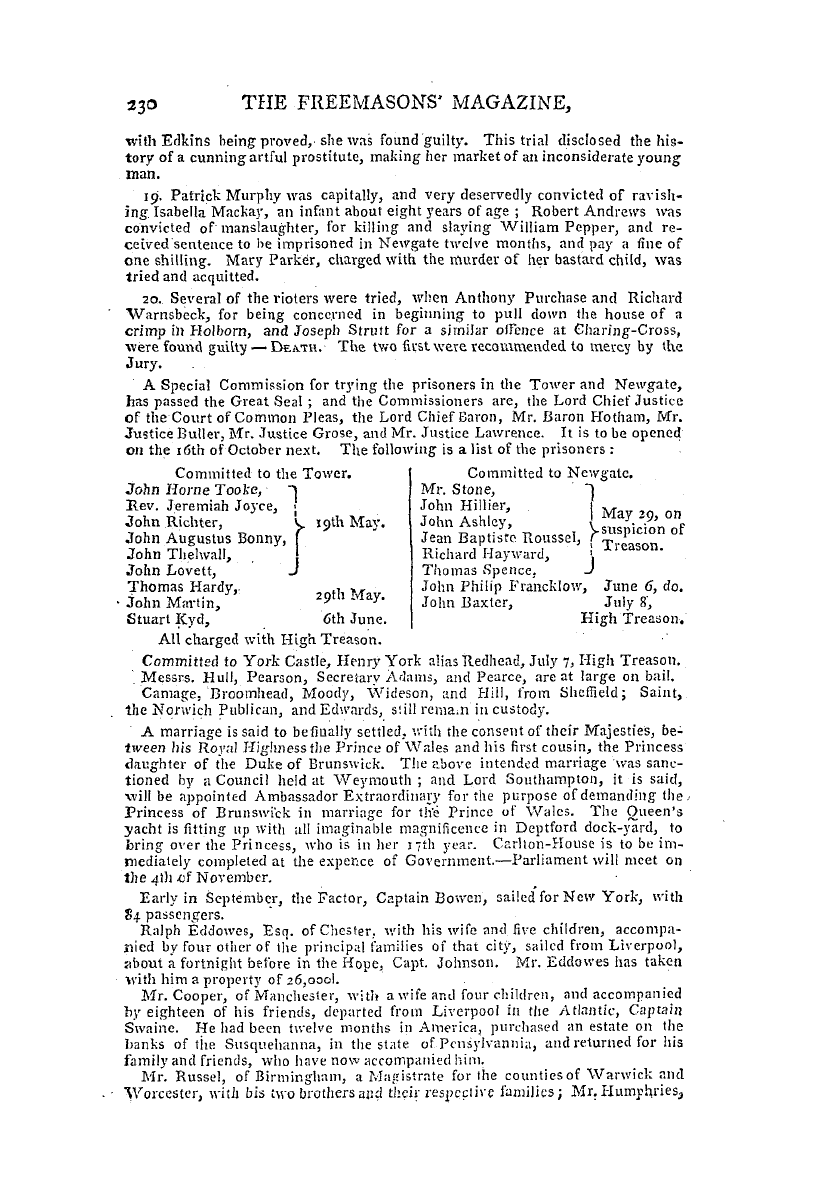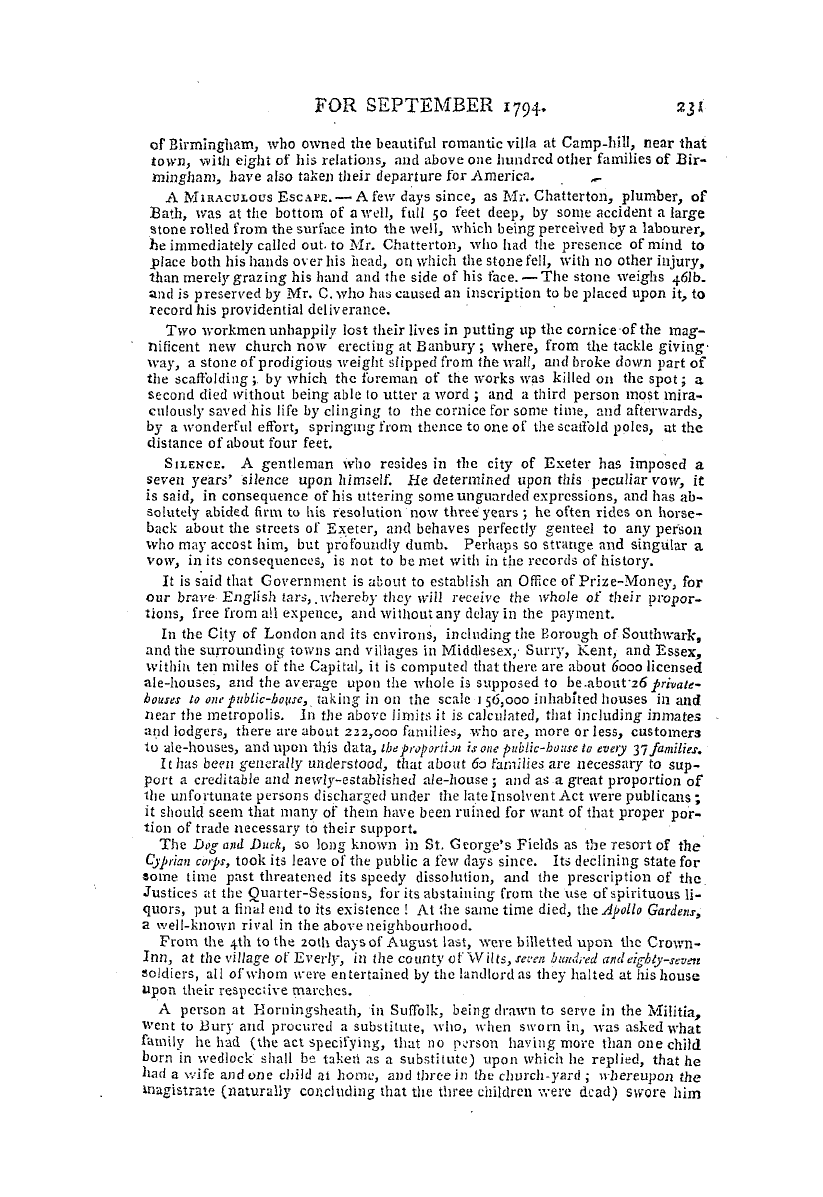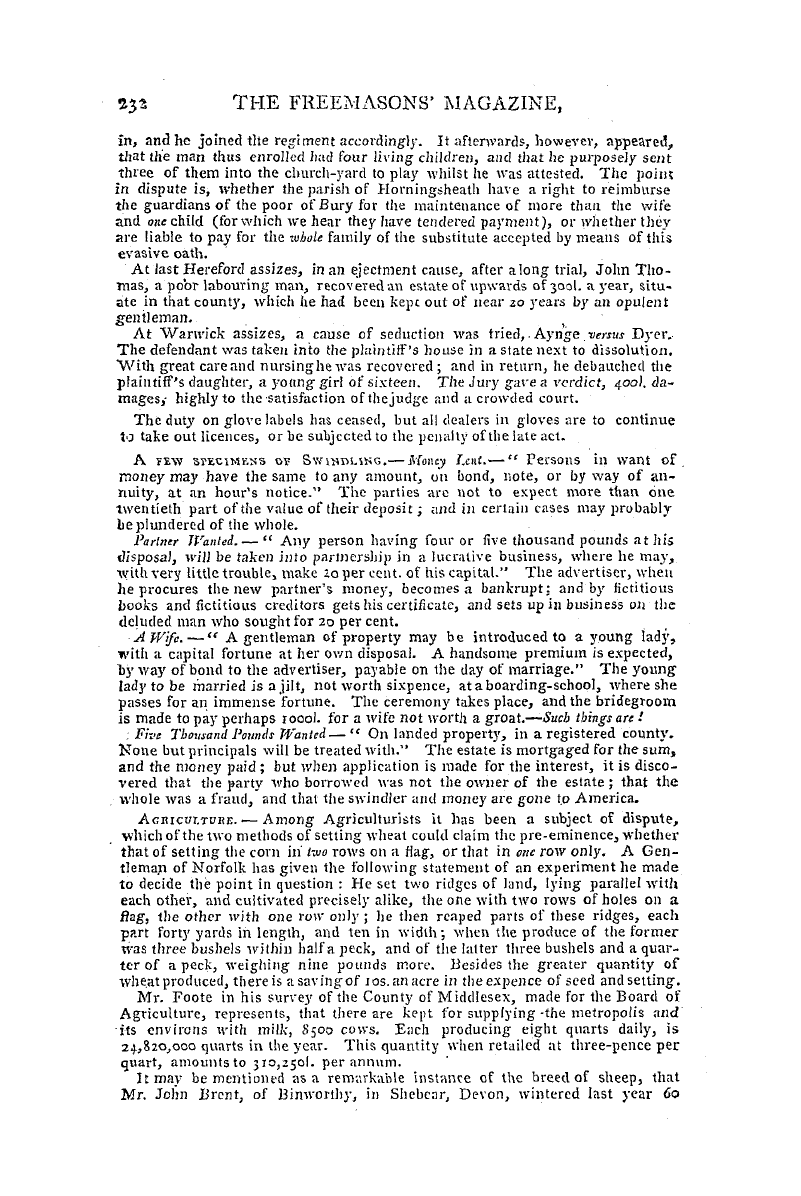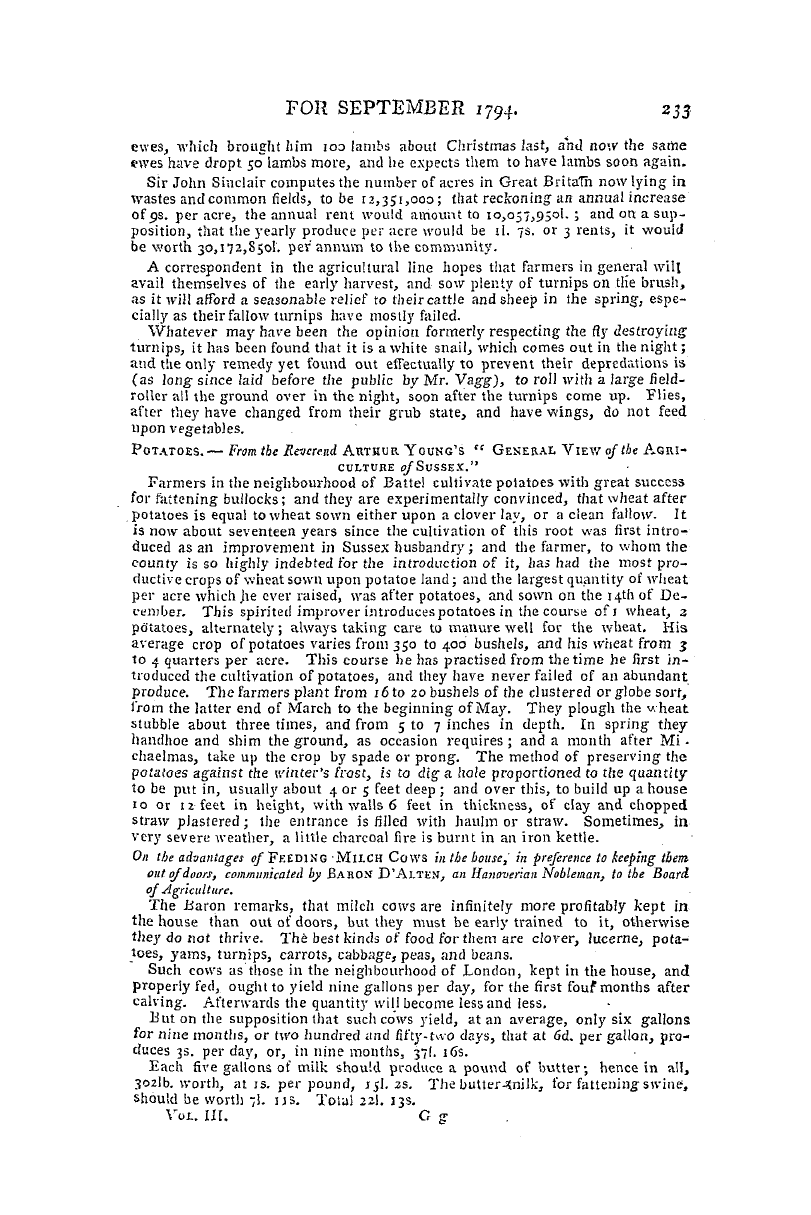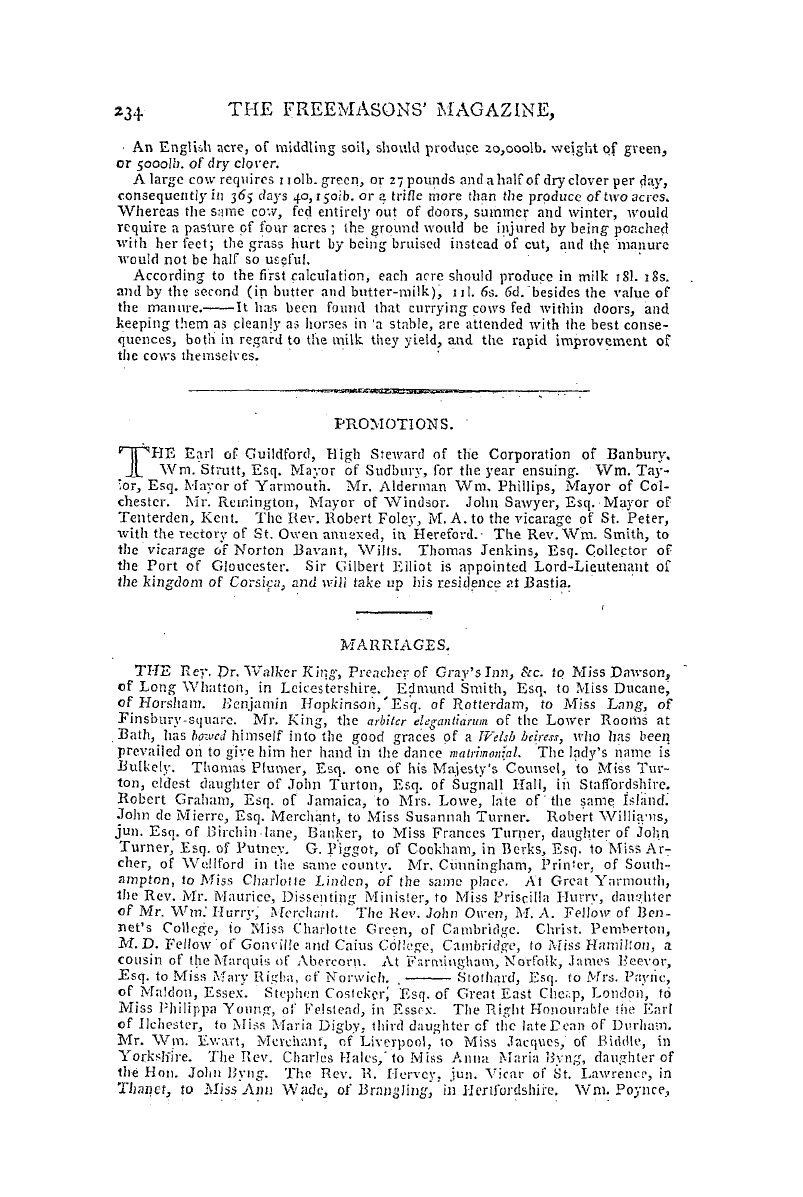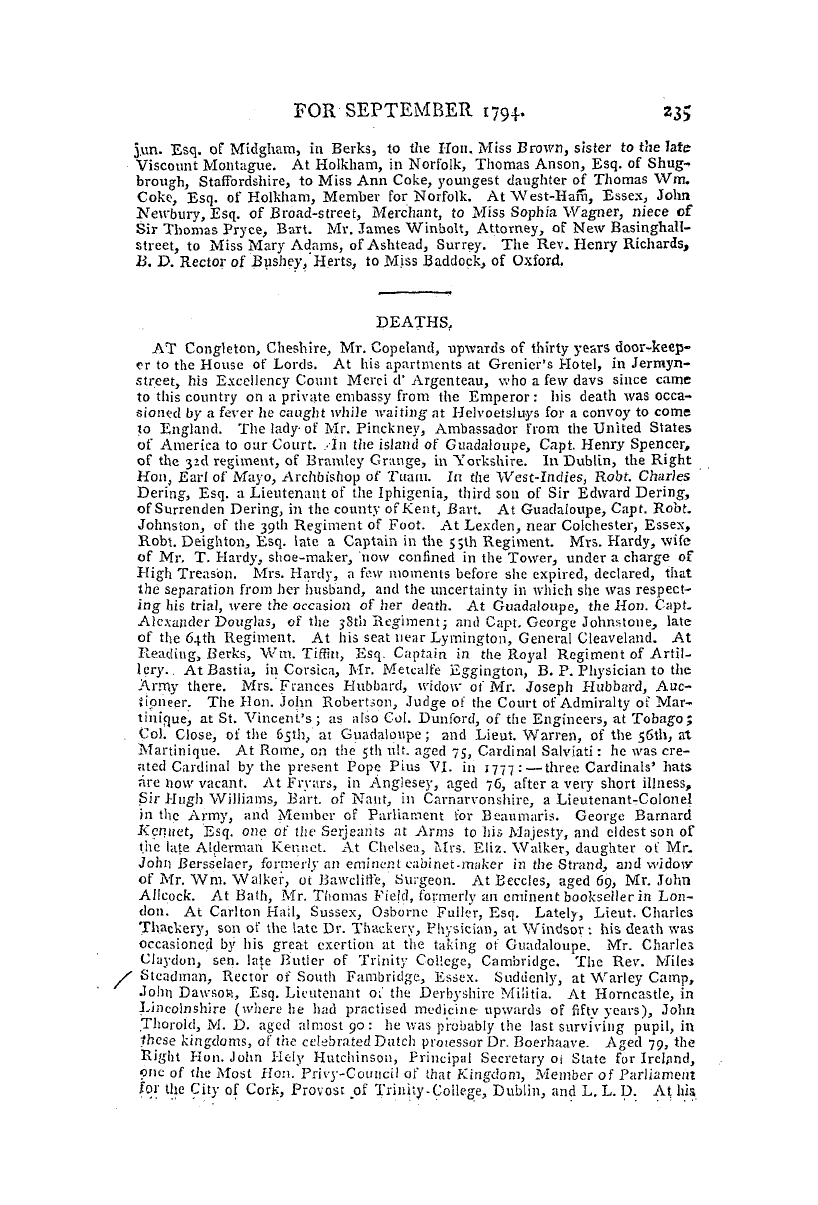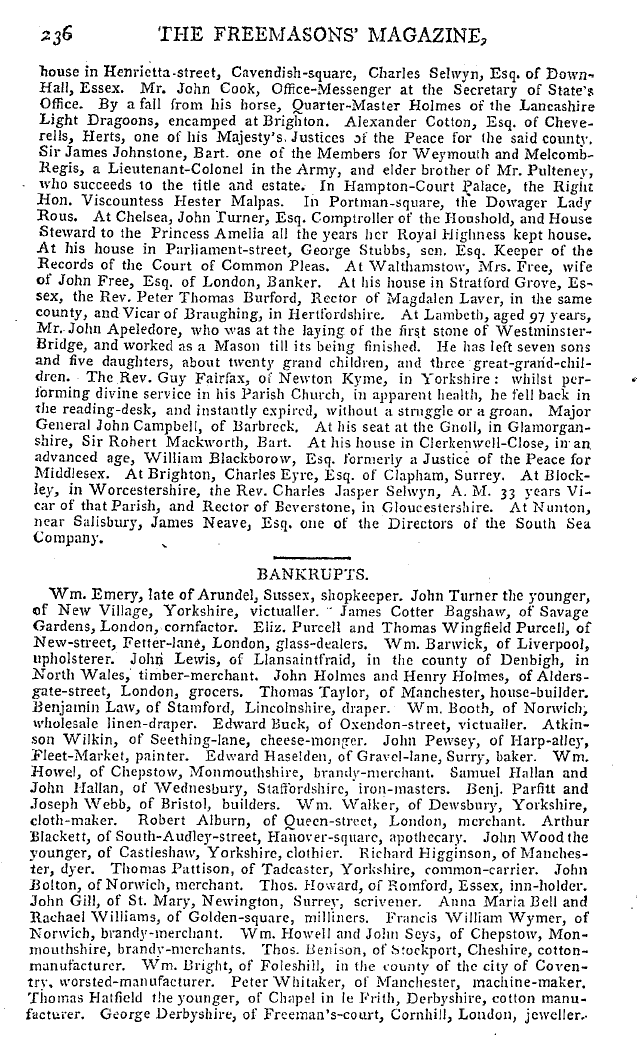-
Articles/Ads
Article MONTHLY CHRONICLE. ← Page 8 of 9 →
Note: This text has been automatically extracted via Optical Character Recognition (OCR) software.
Monthly Chronicle.
ewes , which brought him ioo lambs about Christmas fast , and now the same ewes have dropt 50 lambs more , and he expects them to have lambs soon again . Sir John Sinclair computes the number of acres in Great Britain now lying in wastes and common fields , to be 12 , 351 , 000 ; that reckoning an annual increase ofps . per acre , the annual rent would amount to 10 , 057 , 950 ! . ; and on a supposition , that the yearly produce per acre would be il . 7 s . or 3 rents , it would be worth 30 , 172 , 850 ! . per annum to the community .
A correspondent in the agricultural line hopes that farmers in general will avail themselves of the early harvest , and sow plenty of turnips on tlie brush , as it will afford a seasonable relief to their cattle and sheep in the spring , especially as their fallow turnips have mostly failed . Whatever may have been the opinion formerly respecting the fly destroying turnips , it has been found that it is a white snail , which comes out in the night ; aud the only remedy yet found out effectually to prevent their depredations is ( as long since laid before the public by Mr . Vagg ) to roll with a large
field-, roller all the ground over in the night , soon after the turnips come up . Flies , after they have changed from their grub state , and have wings , do not feed upon vegetables . POTATOES . — From the Reverend ARTHUR YOUNG ' S " GENERAL VIEW of the AGRICULTURE of SUSSEX . "
Farmers in the neighbourhood of Battel cultivate potatoes with great success for fattening bullocks ; and they are experimentally convinced , that wheat after potatoes is equal to wheat sown either upon a clover lay , or a clean fallow . It is now about seventeen years since the cultivation of this root was first introduced as an improvement in Sussex husbandry ; and the farmer , to whom the county is so highly indebted for the introduction of it , lias had the most productive crops of wheat sown upon potatoe land ; and the largest quantity of wheat per acre which he ever raised , was after potatoes , and sown on the 14 th of
December . This spirited improver introduces potatoes in the course of 1 wheat , 2 potatoes , alternately ; always taking care to manure well for the wheat . His average crop of potatoes varies from 350 10400 bushels , and his wheat from j to 4 quarters per acre . This course be has practised from the time he first introduced the cultivation of potatoes , and they have never failed of an abundant produce . The farmers plant from 16 to 20 bushels ofthe clustered or globe sort , from the latter end of March to the beginning of May . They plough the wheat stubble about three timesand from 5 to 7 inches in depth . In spring they
, handhoe and shim the ground , as occasion requires ; and a month after Michaelmas , take up the crop by spade or prong . The method of preserving the potatoes against the winter ' s frost , is to dig a hole proportioned to the quantity to be put in , usually about 4 or 5 feet deep ; and over this , to build up a house 10 or 12 feet in height , with walls 6 feet in thickness , of clay and chopped straw plastered ; the entrance is filled with haulm or straw . Sometimes , in very severe weather , a little charcoal fire is burnt in an iron kettle .
On the advantages of FEEDING MILCH COWS in the bouse , ' in preference to keeping them out of doors , communicated by BABON D'ALTEN , an Hanoverian Nobleman , to the Board of Agriculture . The Baron remarks , that milch cows are infinitely more profitably kept in the house than out of doors , but they must be early trained to it , otherwise they do not thrive . The best kinds of food for them are clover , lucerne , potatoes , yams , turnips , carrots , cabbage , peas , and beans . Such cows as those in the neighbourhood of London , kept in the house , and
properly fed , ought to yield nine gallons per day , for the first fouf months after calving . Afterwards the quantity will become less and less . But on the supposition that such cows yield , at an average , only six gallons for nine months , or two hundred and fifty-two days , that at 6 d . per gallon , produces 3 s . per day , or , in nine months , 37 I . 16 s . Each five gallons of milk should produce a pound of butter ; hence in all , 3021 b . worth , at is . per pound , 15 I . 2 s . The butter-Unilk , for fattening swine , should be worth 7 ! . us . Total 22 I . 13 s . VOL . HI . G g
Note: This text has been automatically extracted via Optical Character Recognition (OCR) software.
Monthly Chronicle.
ewes , which brought him ioo lambs about Christmas fast , and now the same ewes have dropt 50 lambs more , and he expects them to have lambs soon again . Sir John Sinclair computes the number of acres in Great Britain now lying in wastes and common fields , to be 12 , 351 , 000 ; that reckoning an annual increase ofps . per acre , the annual rent would amount to 10 , 057 , 950 ! . ; and on a supposition , that the yearly produce per acre would be il . 7 s . or 3 rents , it would be worth 30 , 172 , 850 ! . per annum to the community .
A correspondent in the agricultural line hopes that farmers in general will avail themselves of the early harvest , and sow plenty of turnips on tlie brush , as it will afford a seasonable relief to their cattle and sheep in the spring , especially as their fallow turnips have mostly failed . Whatever may have been the opinion formerly respecting the fly destroying turnips , it has been found that it is a white snail , which comes out in the night ; aud the only remedy yet found out effectually to prevent their depredations is ( as long since laid before the public by Mr . Vagg ) to roll with a large
field-, roller all the ground over in the night , soon after the turnips come up . Flies , after they have changed from their grub state , and have wings , do not feed upon vegetables . POTATOES . — From the Reverend ARTHUR YOUNG ' S " GENERAL VIEW of the AGRICULTURE of SUSSEX . "
Farmers in the neighbourhood of Battel cultivate potatoes with great success for fattening bullocks ; and they are experimentally convinced , that wheat after potatoes is equal to wheat sown either upon a clover lay , or a clean fallow . It is now about seventeen years since the cultivation of this root was first introduced as an improvement in Sussex husbandry ; and the farmer , to whom the county is so highly indebted for the introduction of it , lias had the most productive crops of wheat sown upon potatoe land ; and the largest quantity of wheat per acre which he ever raised , was after potatoes , and sown on the 14 th of
December . This spirited improver introduces potatoes in the course of 1 wheat , 2 potatoes , alternately ; always taking care to manure well for the wheat . His average crop of potatoes varies from 350 10400 bushels , and his wheat from j to 4 quarters per acre . This course be has practised from the time he first introduced the cultivation of potatoes , and they have never failed of an abundant produce . The farmers plant from 16 to 20 bushels ofthe clustered or globe sort , from the latter end of March to the beginning of May . They plough the wheat stubble about three timesand from 5 to 7 inches in depth . In spring they
, handhoe and shim the ground , as occasion requires ; and a month after Michaelmas , take up the crop by spade or prong . The method of preserving the potatoes against the winter ' s frost , is to dig a hole proportioned to the quantity to be put in , usually about 4 or 5 feet deep ; and over this , to build up a house 10 or 12 feet in height , with walls 6 feet in thickness , of clay and chopped straw plastered ; the entrance is filled with haulm or straw . Sometimes , in very severe weather , a little charcoal fire is burnt in an iron kettle .
On the advantages of FEEDING MILCH COWS in the bouse , ' in preference to keeping them out of doors , communicated by BABON D'ALTEN , an Hanoverian Nobleman , to the Board of Agriculture . The Baron remarks , that milch cows are infinitely more profitably kept in the house than out of doors , but they must be early trained to it , otherwise they do not thrive . The best kinds of food for them are clover , lucerne , potatoes , yams , turnips , carrots , cabbage , peas , and beans . Such cows as those in the neighbourhood of London , kept in the house , and
properly fed , ought to yield nine gallons per day , for the first fouf months after calving . Afterwards the quantity will become less and less . But on the supposition that such cows yield , at an average , only six gallons for nine months , or two hundred and fifty-two days , that at 6 d . per gallon , produces 3 s . per day , or , in nine months , 37 I . 16 s . Each five gallons of milk should produce a pound of butter ; hence in all , 3021 b . worth , at is . per pound , 15 I . 2 s . The butter-Unilk , for fattening swine , should be worth 7 ! . us . Total 22 I . 13 s . VOL . HI . G g




























































